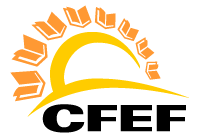
FIND IT FUND IT FLORIDA
Teaching Chemistry and STEAM Concepts While Making Soap

- School:
- Palmetto Ridge High
- Subject:
- Stem
- Teacher:
- Allison Chapman
- Dr. Curtis F. Champman
- Students Impacted:
- 1600
- Grade:
- 9-12
- Date:
- July 21, 2018
Investor
Thank you to the following investor for funding this grant.
Perna-Rose Foundation for Hope - $160.00
Goal
To engage, explore, explain, elaborate, and evaluate many important STEAM concepts while making artisan soaps.
Standards: Lab Safety; Properties of Matter; States of Matter; Physical Properties; Chemical Properties; Physical Changes; Chemical Changes; temperature, endothermic processes; exothermic processes; exothermic reactions; Saponification; Acid-Base Neutralization Reactions; pH; color indicators & acid-base titrations.
What will be done with my students
Students will dissolve lye in an ice bath and melt solid oils- such as coconut and responsibly sourced palm oil- using low heat. They will also adhere to strict safety protocols such as working with the lye in a well ventilated fume hood and wearing goggles, gloves, and a lab apron.
Students will measure the temperature of the ice, lye, and oils using an infrared thermometer. They will also measure the temperature of the chemical reaction during the saponification process.
Students will learn about excess and limiting reagents.
They will superfat the soap, perform pH lather tests, and titrate the soap after it has cured for four weeks.
Benefits to my students
Students will adhere to strict safety procedures and observe, measure, and record endothermic processes, exothermic processes, and phase changes while making homogeneous and heterogeneous mixtures.
Students will observe and record the difference between physical and chemical changes while performing a saponification reaction that changes the fat mixture and lye solution into soap. They will also measure pH and perform acid base titrations while performing quality assurance tests on their batch of soap.
Budget Narrative
We currently have all the equipment and lye needed to make soap. However, we just need more fats, oils and two more infrared thermometers to make the soap labs run more smoothly with this years' students for a cost of approximately $160.
Two years ago, Whole Foods donated 400 soap bags, coconut oil and some essential oils like peppermint, lavender and tea tree oils to help us make even better artisan soaps. Target and Trader Joes donated olive oil and Publix donated coconut oil. NCH and students have donated disposable gloves that have been worn during this lab. I will ask them to donate the gloves again this year. I also plan to request donations of coconut oil from stores like Whole Foods, Publix, Target, Sams Club, CostCo, and Trader Joe's in order to keep the costs for this lab as low as possible.
Items
| # | Item | Cost |
|---|---|---|
| 1 | responsibly sourced palm oil | $110.00 |
| 2 | infrared thermometers | $30.00 |
| 3 | essential oils | $0.00 |
| 4 | natural clay and natural colorants | $0.00 |
| 5 | soap labels, packaging & bags | $20.00 |
| 6 | lye | $0.00 |
| 7 | distilled water | $0.00 |
| 8 | gloves | $0.00 |
| Total: | $160.00 |





Share
Please share this page to help in fulfilling this grant.
Email to a Friend